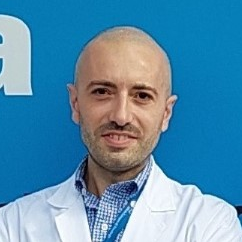Breast Cancer Genetics: Diagnostic and Treatment 2022
A special issue of Genes (ISSN 2073-4425). This special issue belongs to the section "Genetic Diagnosis".
Deadline for manuscript submissions: closed (15 September 2022) | Viewed by 6547
Special Issue Editors
Interests: breast cancer; new drugs; clinical trials; translational research; immunotherapy
Special Issues, Collections and Topics in MDPI journals
2. Division of Pathology, IRCCS European Institute of Oncology (IEO), Milan, Italy
Interests: translational research; breast cancer; biomarkers; immunology; molecular pathology; TILs; precision medicine
Special Issues, Collections and Topics in MDPI journals
Interests: predictive molecular pathology in solid tumors; next generation technologies in molecular biology; liquid biopsies; predictive oncology
Special Issues, Collections and Topics in MDPI journals
Special Issue Information
Dear Colleagues,
There are many options for treating hereditary breast cancers. Hereditary breast cancers are different from sporadic cancers in ways that can affect treatment choices. Genetic test results may influence some treatment decisions. The choice of treatment can be personalized based on the cancer type, stage, and genetics. An inherited gene can increase the risk of developing a second breast cancer; thus, strategies such as removing a woman’s breast or ovaries are intended to prevent a future cancer. However, women who have already been diagnosed with breast cancer must also consider how best to treat the existing tumor. There are numerous treatment options for the cancer patient; however, there are also implications of genetic test results on cancer prevention strategies for themselves and their family members. More patients are receiving genetic testing when they are diagnosed with breast cancer, with increasingly more sophisticated tests that include a panel of at least 30 different genes, each carrying different risks for future cancers.
In this Special Issue, we welcome reviews, reports of new methods, and original articles covering all aspects of breast cancer genetics from diagnostic to treatment.
Dr. Carmen Criscitiello
Prof. Dr. Nicola Fusco
Dr. Umberto Malapelle
Guest Editor
Manuscript Submission Information
Manuscripts should be submitted online at www.mdpi.com by registering and logging in to this website. Once you are registered, click here to go to the submission form. Manuscripts can be submitted until the deadline. All submissions that pass pre-check are peer-reviewed. Accepted papers will be published continuously in the journal (as soon as accepted) and will be listed together on the special issue website. Research articles, review articles as well as short communications are invited. For planned papers, a title and short abstract (about 100 words) can be sent to the Editorial Office for announcement on this website.
Submitted manuscripts should not have been published previously, nor be under consideration for publication elsewhere (except conference proceedings papers). All manuscripts are thoroughly refereed through a single-blind peer-review process. A guide for authors and other relevant information for submission of manuscripts is available on the Instructions for Authors page. Genes is an international peer-reviewed open access monthly journal published by MDPI.
Please visit the Instructions for Authors page before submitting a manuscript. The Article Processing Charge (APC) for publication in this open access journal is 2600 CHF (Swiss Francs). Submitted papers should be well formatted and use good English. Authors may use MDPI's English editing service prior to publication or during author revisions.
Keywords
- genetics
- hereditary breast cancer
- prophylactic surgery
- choice of breast surgery
- oophorectomy vs. medication to induce menopause
- genetic tests
- PARP inhibitors for metastatic breast cancer
- use of chemotherapy agents
- participation in treatment clinical trials








